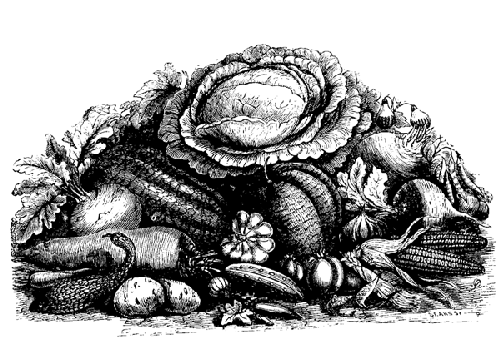In a bowl, soak for several hours or
overnight:
2 cups dry white beans, such as cannelloni
beans
After soaking overnight, drain the beans, place them in a pot, and fill it with water
(try adding a few bay leaves or a sprig of rosemary). Bring to a boil and simmer for at
least 15 minutes. Strain out the water and put the beans back in a pot (if using an
immersion blender) or in the bowl of a food processor.
Add to the pot or bowl with beans and then purée until blended:
2 cups (500g) chicken or vegetable stock
1 medium (150g) yellow onion, diced and
sautéed
3 slices (50g) French bread, coated in olive oil and
toasted on both sides
½ head (25g) garlic, peeled, crushed, and sautéed or
roasted
Salt and pepper, to taste
Notes
Don’t skip soaking and boiling the beans. Really. One type of protein
present in beans—phytohaemagglutinin—causes extreme intestinal distress. The beans
need to be boiled to denature this protein; cooking them in a slow cooker or sous
vide setup will not denature the protein
and actually makes things worse. If you’re in a rush, use canned white beans;
they’ll have already been cooked.
Variations: try blending some fresh oregano into the soup. Toss some
bacon chunks on top or grate on some Parmesan cheese as well. As with many soups,
how chunky versus how creamy to blend the soup is a personal
preference.
Make sure to toast the French bread to a nice golden brown. This will
add the complex flavors from caramelization and Maillard reactions in the sugars and
proteins from the bread. You can pour olive oil onto a flat plate and dip the bread
in to coat it.

If you’re not much of a soup person, try making savory sorbets using seasonal
ingredients. A summer sorbet with tomatoes and tarragon? Yum. Carrot ice cream? Why not? And
for winter, while unusual, bacon ice cream has been enjoyed by diners at Chef Heston
Blumenthal’s UK-based restaurant The Fat Duck, and taken further with candied bacon bits in
a recipe on David Lebovitz’s blog (search online for “candied bacon ice cream
recipe”).
Finally, here are a few tips related to seasonality to keep in mind:
Use fresh herbs whenever possible, because most dried herbs don’t have anywhere near
the strength of flavor. The volatile oils that are responsible for so much of the aromas
in herbs oxidize and break down, meaning that the dry herbs are a pale substitute. Dried
herbs have their place, though; it makes sense to use dried herbs in the dead of winter
when annual plants like basil aren’t in season. Store dry herbs in a cold, dark place
(not above the stove!) to limit the amount of heat and light, which contribute to the
breakdown of organic compounds in spices.
Grind your own spices as much as possible. Fresh-grated nutmeg will be much stronger
than preground nutmeg, for the same reasons that many fresh herbs are better than their
dried counterparts: the aromatic compounds in a preground spice will have had time to
either hydrate or oxidize and disperse, resulting in flavor loss. Most spices also
benefit from being bloomed—cooked in oil under moderate but not scorching heat—as a way
of releasing their volatile chemicals without breaking them down.
If you’re looking for convenience, commercially frozen vegetables and fruits are
actually pretty good. Freezing produce right when it is harvested has a few advantages:
nutritional breakdown is halted, and the frozen item is from the peak of the season
while the fresh version in your store may have been harvested early or late. Using
frozen produce is especially useful if you’re cooking for just yourself, because you can
pull out a single portion at a time. If you’re growing your own food and intend to
freeze it, look up online how to use dry ice to pack and quick-freeze the produce;
freezing in your home freezer takes too long and leads to mushy veggies.
When selecting produce at the store, think about when you’ll want to use it. For
example, if you’re buying bananas to eat throughout the week, instead of buying one
cluster of mostly green bananas, buy two smaller clusters, one mostly yellow (for
sooner) and one mostly green (for later). Picking in-season produce and selecting it so
that it will be ripe when you’re ready to use it are good ways to guarantee
quality.
Organic foods are those grown
or raised to USDA National Organic Program (NOP) regulations on farms or ranches certified
as following those regulations. Organic produce has restrictions on which pesticides can
be used; animals butchered for organic meats are required to be given access to the
outdoors and are prohibited from being given antibiotics or growth hormones. Because of
these restrictions, the cost of producing organic food is typically higher.
Conventional foods are those not certified for sale under the
label organic, regardless of whether they are grown to the same
standards and regardless of their place of origin. They must still be grown to acceptable
USDA/FDA standards, though.
When it comes to produce, just because it’s organic doesn’t mean it’s automatically
safer, just as software labeled as open source isn’t necessarily of
higher quality than proprietary software. Of course, there are other reasons to buy
organic, but if your concern is food safety and pesticides, the benefit of organic isn’t
necessarily clear-cut: whether exposure to traditional pesticides is always worse for you
than exposure to their organic replacements is not yet known. The detectable levels of
pesticides in our bodies are well below anything approaching toxic, and as chemists have
told me, “it’s the dosage that matters.” To put some numbers to it, consider what Dr.
Belitz et al. wrote in Food Chemistry (Springer): “[T]he natural
chemicals [in a cup of coffee] that are known carcinogens are about equal to a year’s
worth of synthetic pesticide residues that are carcinogens.”
Given the option, farmers would rather not have to spray any type of pesticide on
their crops: it costs money, takes time, and increases their exposure to the chemicals.
Just keep in mind that if there were an easy answer—say, if organic practices were always
better and always cheaper—everyone would be doing it that way.
If you do feel going organic is for you but are on a tight budget, here are some
general rules of thumb. For fruits, if you’re going to eat the skin, buy organic. If
you’re going to peel them, buying organic appears to offer comparatively little advantage
when it comes to exposure to pesticides. For veggies, organic bell pepper, celery, kale,
and lettuce test as having lower levels of pesticides than their conventional
counterparts.
If you’re interested in seeing for yourself if organic food tastes different from
conventional food, try this side-by-side experiment. Make two versions of a simple pasta
dish with sautéed chicken and red and yellow bell peppers, using organic ingredients in
one and conventional in the other. How does organic chicken compare to conventional
chicken? Can you taste the difference in the bell peppers? For that authentic scientific
experience, serve the side-by-side meal to a bunch of friends without revealing which bowl
contains the organic version to run a true “taste test.” You might find the variance in
flavor to be greater—or less—than you expect.
